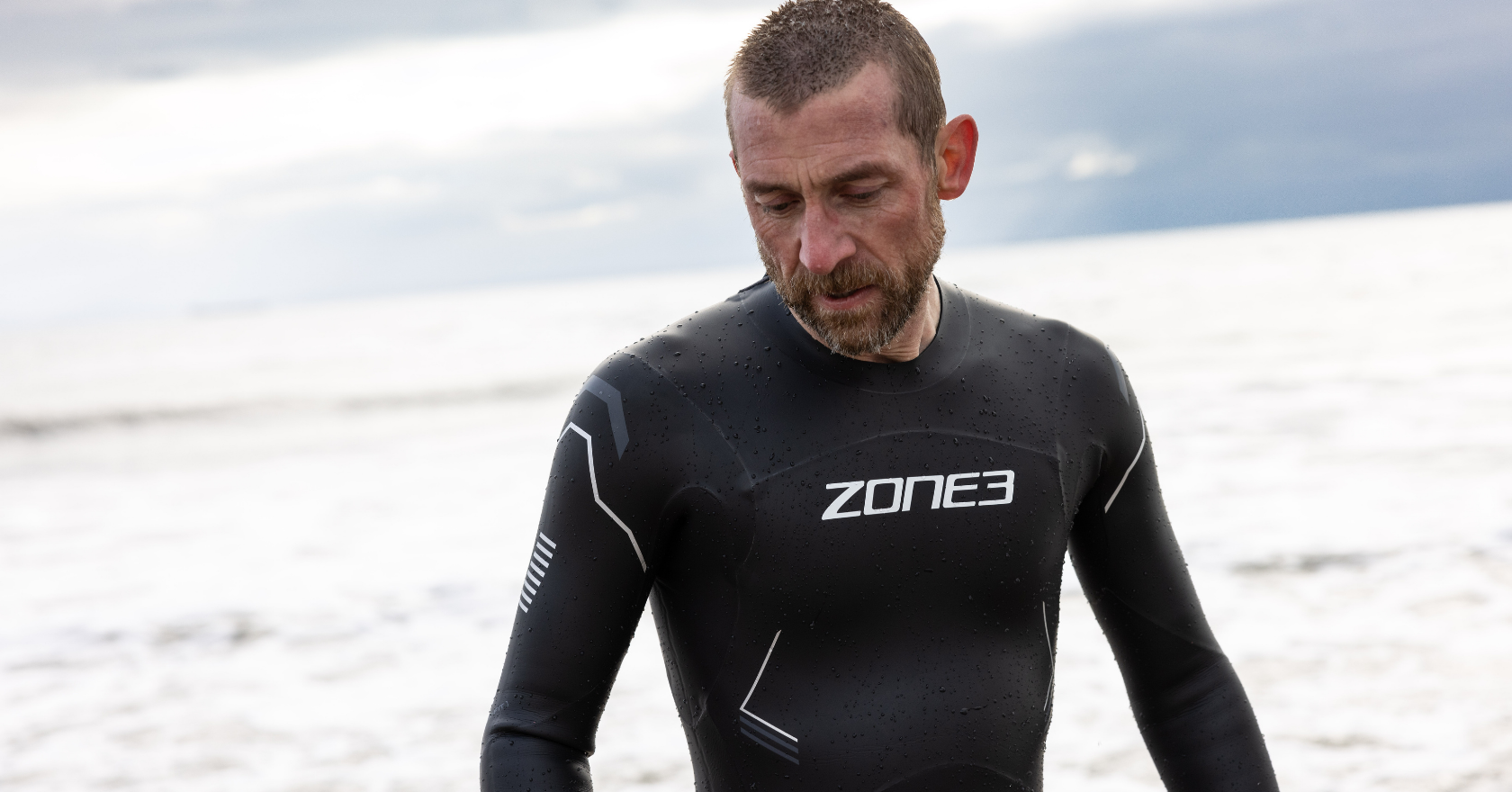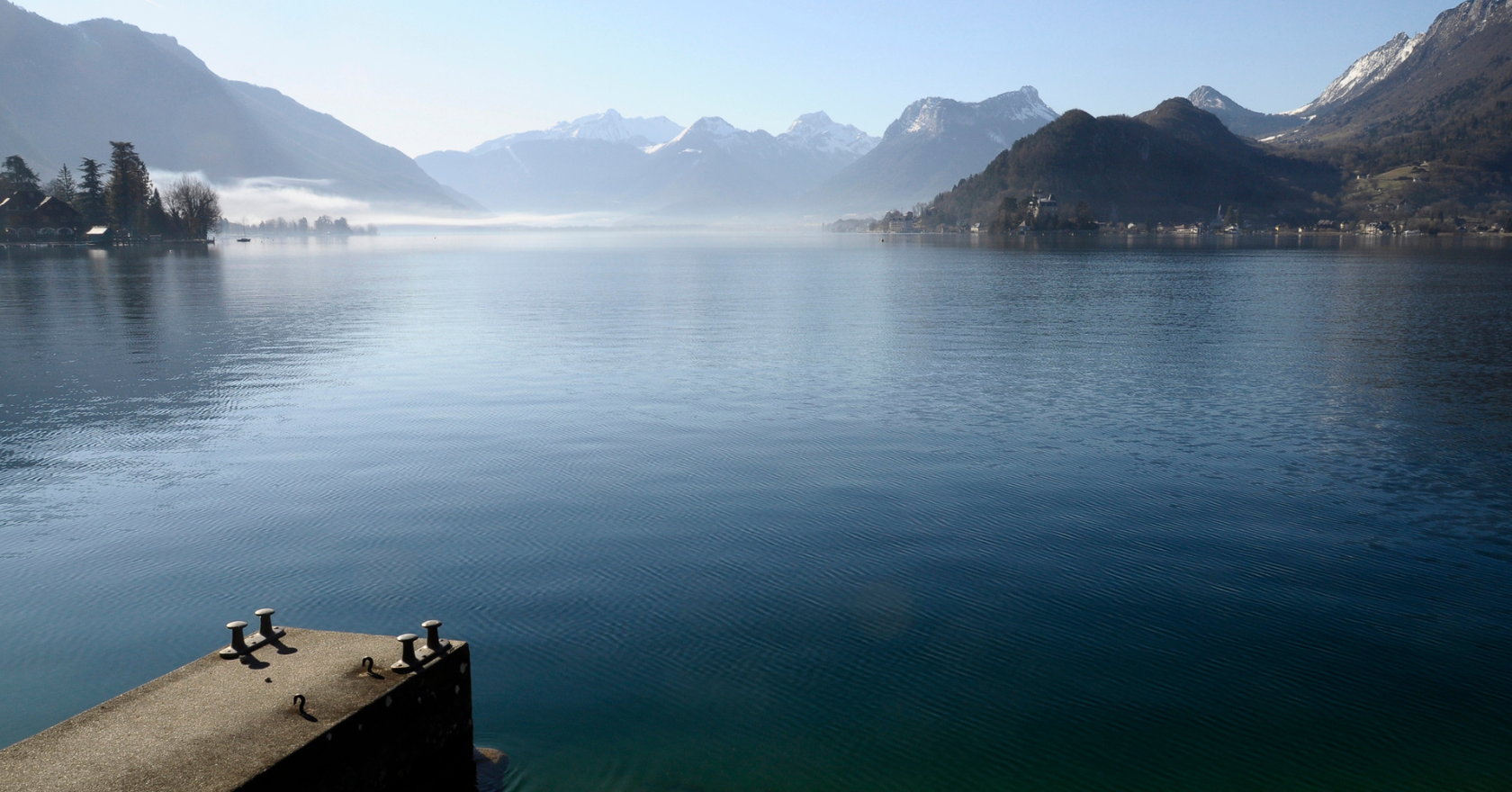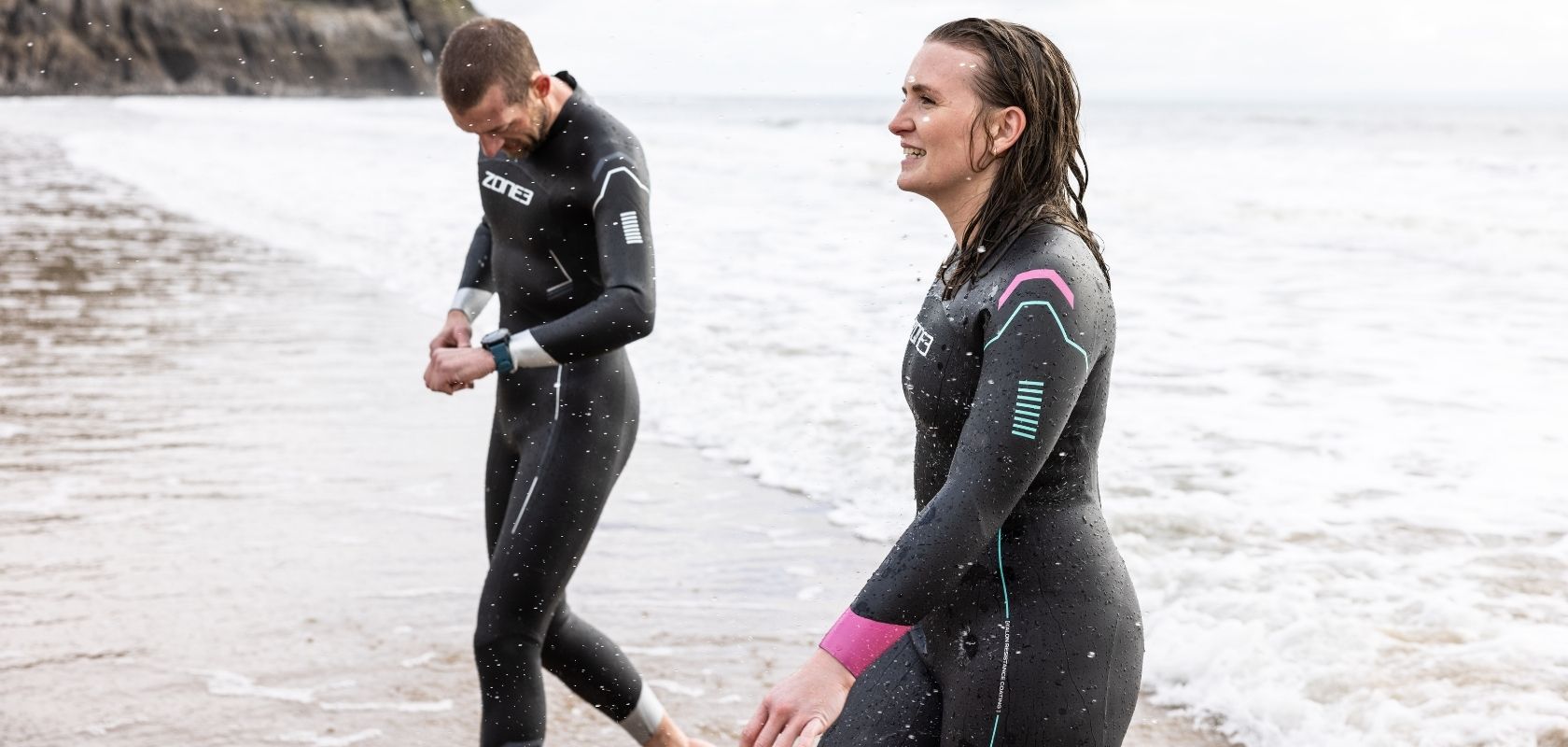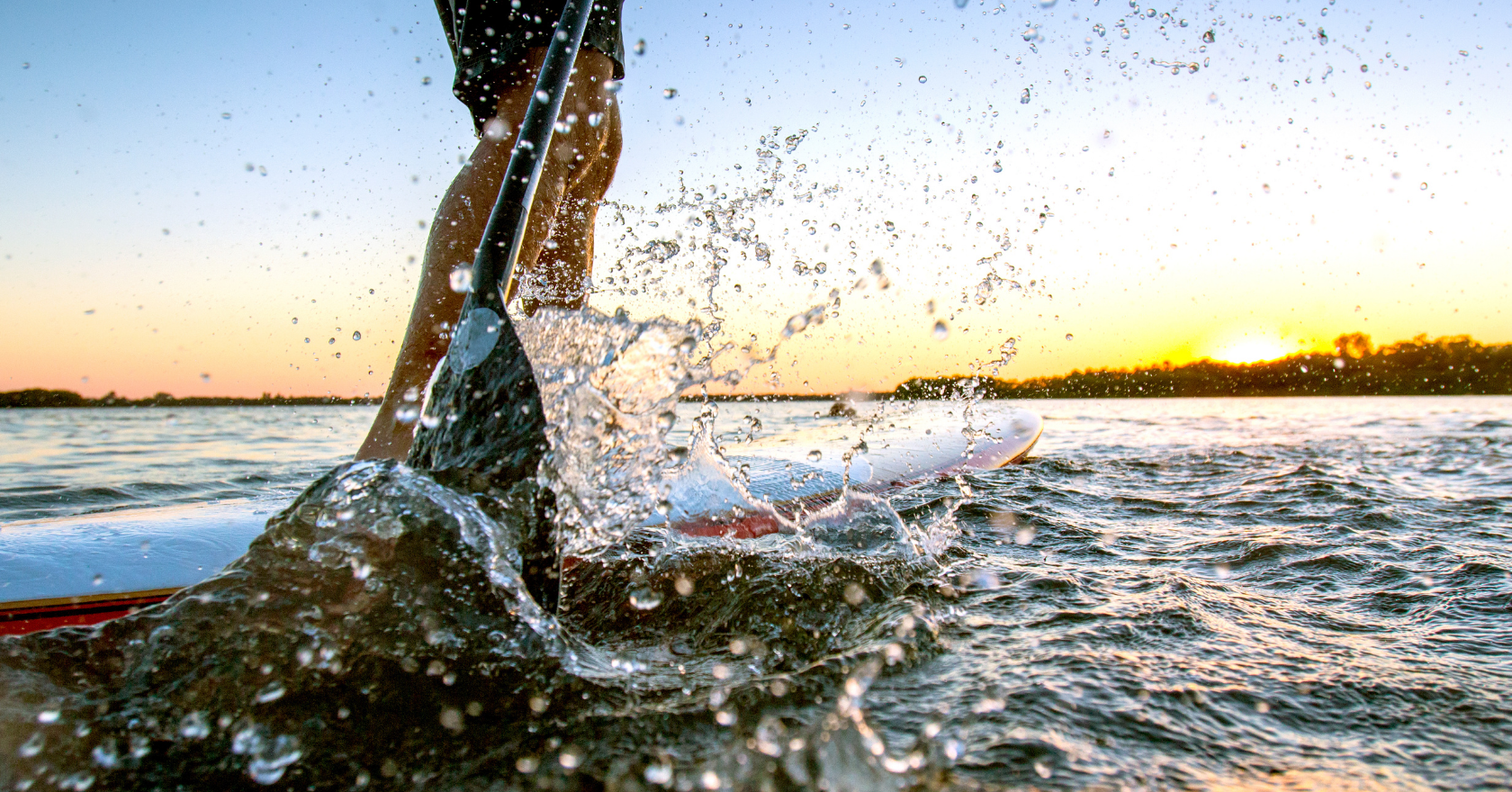WETSUIT BUYING GUIDE
Ready to dive into your next adventure? If you’re heading for the wet stuff, a wetsuit can make all the difference when pushing the limits of what’s possible in water. But how do they work? And what type should you go for?
It’s true - wetsuits can be a tricky business, but the key is finding one that works for you. How so? By thinking carefully about how and when you want to use it. Then you can narrow things down based on fit, style, thickness, and construction. Our expert guide is your all-you-need-to-know lowdown about how they work and the key things to consider when choosing. Read on to discover how to find the right one and level up your next water-bound adventure.
How Do Wetsuits Work?
Simply put, wetsuits exist to keep you warm in the water. Most are made using a synthetic rubber called neoprene, with tiny holes that allow water in but not out. Because water is a great insulator and conductor of heat, the wetsuit works by trapping a thin layer of water between your skin and the neoprene, which is then subsequently warmed by the natural heat from your body. Alongside the suit, this warm, thin layer acts as an extra layer of insulation, to keep your body temperature up.
Wetsuits also give you extra manoeuvrability in the water because their tight fit is like a second skin, reducing drag and adding buoyancy. With a wetsuit, you’ll feel more athletic and smoother in movement. If your adventure bucket list includes open water swims, catching some waves, or just spending a good chunk of time in the wet stuff, a wetsuit is a must-have addition to your adventure set-up.
Wetsuits come in different shapes, sizes, and thicknesses, designed to perform better depending on the activity you’re doing and the conditions. Before you buy any old wetsuit, think about when, where and for what activities you intend to use it. Here are some factors you’ll want to consider:
How Should My Wetsuit Fit?
Whatever you use your wetsuit for, the most important thing to get right is the fit. Your wetsuit should feel snug and tight all over. If there’s excess material in places like the neck and cuffs, it will let water in and negate all its insulating properties.
Don’t be too taken aback by the tightness of a wetsuit. It might feel a little snug, but this is how it should feel when dry. Wetsuits can differ slightly in size and shape for men, women, and children. So, whatever your body shape, the trick is to keep trying until you find the right fit for you.
What Type of Wetsuit Should I Wear?
Think about the activities you want to do. Where do you want to do them and at what time of year? Are you a summer-only adrenaline junkie? Or are you planning to make your relationship with the water a year-round affair? Water temperature is one of the primary factors to think about when choosing the right type and cut wetsuit:
- Shortie Wetsuits - Cover your torso, upper arms, and thighs. Less restricted movement and more flexibility and comfort. Great for summer adventures.
- Full-length Wetsuits - Cover your whole body apart from head, hands, and feet. Generally thicker than shorties making them ideal for colder conditions.
How Thick Should My Wetsuit Be?
- Summer temperatures: 3/2mm
- Spring - Autumn temperatures: 4/3mm
- Winter temperatures - 5/4mm or thicker
Zip? Or No Zip?
Zips and stitching create holes in the neoprene that can negate the thin, warm insulated layer, so having the right stitching and zips is vital to your suit’s performance. You’ll find three types of zip construction on most wetsuits:
- Back zip wetsuits - Have a zip leading from the base of the spine to the back of the collar. This creates a large opening making getting in and out easier but slightly reduces flexibility and can allow more water to flush through.
- Chest zip wetsuits - These have a flap and zip across the chest, offering great flexibility and a tighter seal around the body to keep you warmer in colder water. They can be a bit more of a challenge to get into, but what you lose in time getting on, you make back in extra comfort and warmth.
- Zip-free wetsuits - The most comfortable and flexible, but also the most expensive. No zip makes it lighter and more watertight. Has an overhead design similar to the chest zip with a tightening cord that increases the warmth of the suit and reduces water flush.
Seams and Stitching
Any stitching involves making holes in the neoprene for the thread to pass through. These holes let water in, so the type of stitching is important when considering how warm and strong you want your wetsuit to be.
- Overlock Stitching - The simplest but least effective at keeping water out. This stitching method is usually found in summer wetsuits or cheaper wetsuits. The two edges of the panels are rolled together and then stitched to hold them in place. This offers less flexibility and can leave a bulge on the inside of the wetsuit, which can cause discomfort and chafing.
- Flatlock Stitching - The overlapping of two pieces of neoprene and then stitching the seam together. The hole left by this zigzag stitching method makes it more breathable and cooler to wear, great for summer but less so for colder water temperatures.
- Glued and Blind Stitched (GBS) - Neoprene segments are glued together and then stitched halfway through to make the seam as watertight as possible. Because the stitching doesn't go fully through or leave holes, the amount of water let in is kept to a minimum. Used in higher quality wetsuits.
- Welded Seams - Use a silicon-based watertight seal to join neoprene panels for a 100% waterproof barrier. The welded seam doesn't make any holes in the neoprene, so water cannot leak through. As a result, you keep warmer whilst also benefiting from added durability and flexibility compared to a GBS seam.
How To Look After Your Wetsuit
After finding your wetsuit looking after and caring for it should be next on your to-do list. Treat your wetsuit right and it will perform better, last longer, and keep you on top of your game for years to come. Follow these simple steps to get the most out of your wetsuit:
- Be Gentle - The tight fit can make putting it on tricky, but yanking your wetsuit on isn’t the answer. Try to avoid putting undue stress on the seams and zips. Start at the bottom with your feet and slowly work your way up in stages, rolling the suit up as you go. And when taking it off, do it in reverse.
- Rinse Off - Once off, turn the wetsuit inside out and rinse with cold, clean water. This preserves the seams and the performance and elasticity of the neoprene.
- Air-Dry - Once clean, leave your suit to air dry inside-out out of direct sunlight, otherwise the neoprene may dry out. Whilst wet, hang by the waist rather than the shoulders using a large plastic coat hanger or a washing line. NEVER wash or dry your wetsuit in a washing machine or tumble dryer.
- Store - Once fully dry, store your wetsuit in a cold, dry area away from direct sunlight. A large, wide non-metal hanger that supports the shoulders properly is ideal. Don’t be tempted to store whilst wet. This will lead to mould, or cause stretching when hung.
Dive in! Shop Watersports
Whether it's catching waves out at sea, wild swimming in the lakes, or kayaking riverside with friends, get all you need for your next adventure right here at Snow+Rock when you shop our watersports collection... See you out there!
Related articles

Let us know you agree to cookies
We use marketing, analytical and functional cookies as well as similar technologies to give you the best experience. Third parties, including social media platforms, often place tracking cookies on our site to show you personalised adverts outside of our website.
We store your cookie preferences for two years and you can edit your preferences via ‘manage cookies’ or through the cookie policy at the bottom of every page. For more information, please see our cookie policy.







